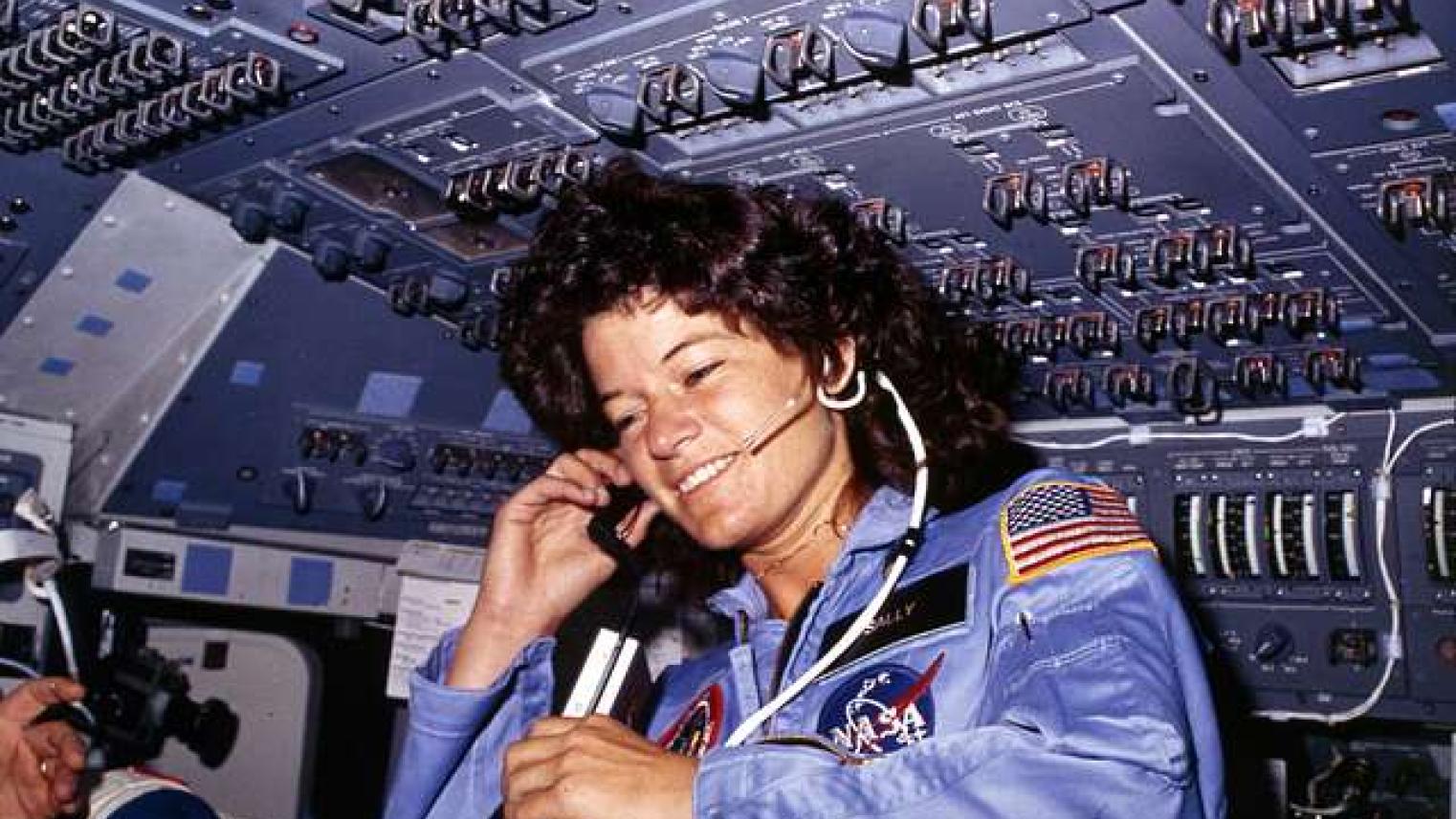One small step: Women, Peace and Security in space

Key points
- Australia depends on space-based technologies for both national security and civilian needs. Yet space systems are increasingly under threat due to interference and attacks aimed at undermining these critical capabilities.
- The gendered implications of attacks on space systems, and the need for greater participation of women in all levels of security and conflict decision-making, are gaining attention in multilateral United Nations (UN) fora such as the Open Ended Working Group (OEWG) on Reducing Space Threats, in which Australia continues to take an active part.
- At the same time, Australia’s closest ally, the United States (US), and our Five-Eyes partner Canada have begun implementing the Women, Peace, and Security (WPS) agenda into their defence-related space operations and workforce strategies and policies.
- Australia has a global reputation for being a leading advocate for gender-responsive approaches and non-discriminatory language in arms control and other diplomatic efforts, and in many ways is best positioned to play a leading role on WPS in space security globally.
Policy recommendations
- Australia’s Defence Space Command, the Department of Foreign Affairs and Trade (DFAT) and the Australian Space Agency (ASA) should put in place targets for diverse gender representation within space careers and related Defence careers, and pathways to fulfilling these targets.
- Defence Space Command should instate a Gender, Peace and Security advisor role.
- Defence Space Command should adopt clear national commitments that consider the gendered implications of targeting space systems.
- DFAT should update the Australian National Action Plan for WPS to explicitly include space systems, space security and space careers in the armed forces.
Along with land, sea, air and cyber, the 2023 Defence Strategic Review (DSR) recognised space as a fifth operational domain for defence and national security. Yet precisely because space technologies are critical to all global military operations today, space systems are increasingly under threat from interference or targeting. The space domain is therefore not only a support domain, but a strategic domain unto itself, and it is in Australia’s national interest to ensure the success of international space security initiatives. This includes ensuring minimum impact on civilians from deliberate disruptions to space systems. Applying a gender lens is a necessary component of this, which requires understanding the specific impacts on women and girls of deploying space technologies for military purposes, and of targeting space systems.
Australia’s nascent Space Command can set an example for international counterparts by foregrounding gender equality in its operations. There is an opportunity to engrain these principles early in this new institution so they can be positively institutionalised and embedded in policy and planning.
The current lack of women’s equal representation in the space sector undermines the representative nature of our democracy and national interests overseas.
A key principle underlying Australia’s democratic system is that our public institutions should represent the full spectrum of our nation. Strategically, we also risk losing the advantage of women’s equal contribution to international space security decision-making, as evidenced in the wealth of research on the ‘business case’ and benefits of gender diversity to organisations. Moreover, a lack of representation often leads to a lack of sufficient critical, gender-responsive decision-making. This in turn risks further imperilling girls and women in conflict and post-conflict zones where space technologies are implicated.
A gender lens on space dependencies
The Australian Defence Force (ADF) depends on space technologies for navigation, communications, weapons deployment, maritime domain awareness, and meteorology critical for aviation and naval planning. Numerous examples of the pivotal role of space technologies in warfare can be drawn from Ukraine, such as the donation of Earth observation satellite data to the Ukrainian government by commercial providers to assist in responding to attacks. SpaceX has also provided satellite-based internet and communications. The risk for citizens when satellite systems are targeted was highlighted by a Russian attack on a telecommunications satellite owned by US company Viasat, which was providing services both to the Ukrainian government and citizens.
Today, space-based services are overwhelmingly dual-use; that is, a single satellite system provides services both for military and civilian use. The attack on Viasat led to loss of service for millions of Ukrainians, as well as citizens of neighbouring countries, including a German windfarm. Many of the space services purchased by the Australian Department of Defence are dual-use, which increases the risk for civilians if Australian armed forces, or those of its partner nations, were the subject of targeted interference.
The gendered implications of losing access to space-based services need to be better understood. The UN Security Council’s WPS agenda seeks to highlight the ways in which women and girls are uniquely and sometimes disproportionately impacted by conflict, often because they are generally in a disadvantaged economic and societal position.
The targeting of space systems is a “threat multiplier” to existing gender inequalities. Satellite telecommunications form the backbone of many mobile phone networks and internet, while satellite position and timing systems such as GPS provide navigation as well as underpinning banking and payment systems. The loss of access to critical infrastructure from space systems due to deliberate interference could have disproportionate impacts on girls and women. It can mean denial of access to education, to digital payment systems needed for local economies or access to funds, to telecommunications, or to emergency response services – which, due to existing gender inequality, could have an exacerbated impact on women, girls, and gender minorities. Indeed, in Ukraine, forced displacement, gender-based violence, infrastructure damage, impeded access to health services, disruptions to education, and economic hardship have disproportionately affected the lives of women and girls.1
Bringing space into WPS and WPS into space
The UN Security Council adopted Resolution 1325 on WPS in 2000, calling for (a) the protection of the rights of girls and women in conflict, and (b) the inclusion of women in all aspects of peace and security. These two aspects of the WPS agenda are interlinked, but require separate sets of actions.
First, regarding protection of the human rights of girls and women in conflict, whilst the 2000 Resolution has been followed by nine further resolutions, space technologies have remained absent from the agenda. One later resolution does refer to “emerging and cross-cutting issues”2, under which space technologies and military space operations can be incorporated. The impact of emerging technologies in conflict is slow to be incorporated into the WPS agenda globally. In the last 20 years of UN Security Council open debates relating to the WPS agenda, fewer than two dozen statements linked it to the internet or the use of technology. The terms ‘cyber’, ‘online’, ‘technology’, ‘digital’, and ‘internet’ are not mentioned at all. However, several nations – among them Australia – have included cyber security in their WPS National Action Plan (NAP) as an emerging or cross-cutting issue. There is room, therefore, to include space technologies and space security in these NAPs. DFAT should leverage the opportunity of the 2025 independent review of Australia’s NAP to ensure space systems, space security and space careers in the armed forces are explicitly included.
There is evidence to show that the implementation of a gender lens is necessary for military technology design and implementation, targeting decisions, arms control, and diplomacy. With respect to targeting of space systems and the development of counterspace capabilities, the gendered and civilian implications must be considered. This is the case for kinetic destruction of satellites, as well as temporary or “soft kill” options such as jamming or disrupting signals, or cyber attacks. The risk of not applying a gender lens is that girls and women will be disproportionately affected by missteps and serious gaps in decision-making – including in relief and recovery.
States need to implement a gender perspective in all military and security space operations which impact terrestrial conflict.
This includes tasking space services to prevent further atrocities and gender-based violence, such as the use of Earth observation satellite data to track the impact of violence in real-time. This can contribute to gender equality in societies that are more susceptible to conflict.3 Space technologies such as Earth observation, communications and navigation are also critical in relief and recovery efforts in conflict zones, and it is necessary to ensure a mainstreamed gender approach when these technologies are deployed, such that the space-based services support gender-responsive decision-making.
Defence Space Command should identify a clear set of principles and rules of engagement that articulate this commitment. Following one of the recommendations of the DSR, Defence Space Command moved into the Joint Capabilities Group in July 2023, meaning it can influence the mainstreaming of WPS with respect to deploying and targeting space systems across the whole of the ADF.
Second, regarding the increased inclusion of women in all aspects of peace and security, there is evidence that more women participating and making decisions in the armed forces, diplomatic and policy roles, and in senior leadership roles in the commercial sector, ensures this gender lens is applied.4 Women’s participation is also associated with faster and more sustainable resolutions to conflict and longer lasting peace.5 Whilst the under-representation of women in space security is not unique, it is out of line with Australia’s international and domestic obligations.
Globally, women make up only 20 per cent of the space workforce, a figure that has remained stagnant for the past 30 years.6
The ADF is comprised of only 19 per cent women, and women remain under-represented in international space security initiatives.
Similarly, women comprise an average of only one-third of delegates in multilateral cybersecurity negotiations, where a gender lens is also absent.7 Under-representation poses both a missed opportunity and a security risk.
The absence of women in decision-making roles in space diplomacy and Defence space operations increases the risk that a gender lens will not be sufficiently applied. It also impacts Australia’s ability to meet its international obligations under both the WPS agenda and the Convention on the Elimination of All forms of Discrimination Against Women (CEDAW), which is currently considering special measures to ensuring parity in international decision-making roles.8 Moreover, including “more women in space security positions would bring […] the insistence on inclusion as a pillar of space diplomacy”, which can in turn contribute to reducing the potential for conflict.9
Defence Space Command is currently working to define specific space careers, and the training and education needed. It should concurrently implement clear targets for the number of women in all ranks in space careers and ensure pathways for women within Defence to access those space careers.
Gender and wider diversity were not specifically mentioned in the 2023 DSR, nor was WPS, despite workforce being a key focus of the review.
Diversity should be one pillar in the key priority of building and training a Defence space workforce. Implementing WPS principles aligns to the DSR’s commitment to “establish frameworks within a whole-of-government and whole-of-nation approach” to space.
Australia’s WPS NAP also mandates a whole-of-government approach to WPS, therefore Defence is already obligated to apply WPS principles. DFAT should update the NAP to explicitly include the gendered considerations of targeting space systems, and to include the need for more women in Defence space careers, space diplomacy and space security efforts.
Opportunity to work with partners
Extending Australia’s existing commitments on WPS to military space operations is therefore not only within existing policy mandates, but essential to Australia’s security strategy.
Australia’s closest ally, the US, is already leading the fray, as both US Air Force Space Command and US Space Force are under congressional mandate to implement WPS into their workforce through greater representation of women at all ranks, and the application of WPS principles to space operations. Similarly, Canada’s Department of National Defence has begun considering how to implement WPS principles into its space security policies. The door is therefore wide open for Australia to take explicit steps nationally and internationally, in partnership with these two Five Eyes nations, to advance the application of WPS to space security.
The groundwork for this has already been laid during a national workshop on WPS and space held in Canberra in April 2023, which included participants from Defence Space Command, Defence Information Warfare, the US Space Force, as well as WPS experts from DFAT and academia.
There is appetite on the part of the US to partner with Australia and Canada, which is an opportunity that should be grasped.
Australia takes an active role in international space security initiatives, particularly through the UN OEWG on Reducing Space Threats (OEWG). Australia co-sponsored an important side event at one of the early OEWG sessions, discussing the need to apply a gender lens to space security. This was done through Amanda Gorely, the country’s Ambassador for Arms Control and Counter-Proliferation, together with the Philippines and the UN Institute of Disarmament Research. As a direct result of this event, some state delegations began calling for greater participation of women in space security discussions and national decision-making, and for the application of a gender lens on space security, including an assessment of how space threats can impact people differently depending on gender, social and economic status. Australia continues to be an active participant state in the 2024 iteration of the OEWG and related UN space security initiatives, and DFAT, together with Defence, should continue to advocate for a mainstream gender approach to these issues.
Australia has a reputation for being a successful norms entrepreneur, and there is an opportunity to leverage that reputation in bringing the WPS agenda into space operations. Recently, DFAT took an active role in negotiations for a new High Seas Treaty, in which a historical shift in legal terminology was achieved with the adoption of the term “common heritage of humankind” to replace “common heritage of mankind”. This demonstrates Australia’s commitment to support an international desire to apply a gender lens to international matters. It is only one small step to apply this to outer space, going beyond the 1967 Outer Space Treaty designation of space as “the province of all mankind”, to ensure risk mitigation for girls and women in conflict where space technologies are implicated. Space, then, can truly become the “province of all humankind”.
References
- Akanksha Khullar, War’s Gendered Costs: The Story of Ukraine’s Women, Observer Research Foundation, November 2022.
- United Nations, “Security Council Unanimously Adopts Resolution 2242 (2015) to Improve Implementation of Land mark Text on Women, Peace, Security Agenda,” 13 October 2015, accessed 11 January 2024, https://press.un.org/ en/2015/sc12076.doc.html
- Kyleanne Hunter, “Looking for a Few Good Operators: Opportunities for Space Force to Fulfill the Women, Peace and Security Agenda,” Spacewatch Global, 2021, accessed 11 January 2024, https://spacewatch.global/2021/06/ spacewatchgl-share-looking-for-a-few-good-operators-opportunities-for-space-force-to-fulfil-the-women-peace and-security-agenda/
- Karen Brown, “Young women in UN peace and security policy,” in Young Women and Leadership, ed. Katrina Lee-Koo and Lesley Pruitt (London: Routledge, 2020), 99-119.
- UN Women, “Facts and Figures: Women’s Leadership and Political Participation,” 2023, accessed 11 January 2024, https://www.unwomen.org/en/what-we-do/leadership-and-political-participation/facts-and-figures; UN Women, “Conflict Prevention and Resolution,” 2023, accessed 11 January 2024, https://www.unwomen.org/en/what-we-do/ peace-and-security/conflict-prevention-and-resolution.
- UN Women, “Only around 1 in 5 Space Industry Workers Are Women”, UN News, 4 October 4 2021, accessed 11 January 2024, https://news.un.org/en/story/2021/10/1102082
- Lisa Sharland, Netta Goussac, Emilia Currey, Genevieve Feely and Sarah O’Connor, System Update: Towards a Women, Peace and Cybersecurity Agenda, UNIDIR, 2021, accessed 11 January 2024, https://unidir.org/files/2021-09/UNIDIR_ System_Update.pdf
- Elise Stephenson, “Women in international affairs: beyond the ceilings to the glass cliff,” The Interpreter, 5 October 2023, accessed 11 January 2024, https://www.lowyinstitute.org/the-interpreter/women-international-affairs-be yond-glass-ceilings-glass-cliff
- Joan Johnson-Freese and Gitika Bhardwaj, “20 Years Promoting Women in Peace and Security,” Chatham House, 6 March 2020, accessed 11 January 2024, https://www.chathamhouse.org/2020/03/20-years-promoting-women-peace-and-security
About the series
NSC's Policy Options Papers offer concise evidence-based recommendations for policymakers on essential national security issues. Papers in this series are peer-reviewed by a combination of expert practitioners and scholars.

